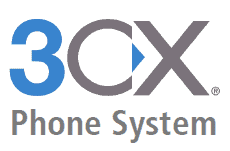VoIP Phone Systems continue to Rise in Businesses, Schools
This modern day system decreases costs, increases communication and improves security.
The year was 1989, an exciting time for technology.
The release of the 486 series of Intel microprocessor opened the door for much more powerful PC’s to be made. Microsoft released Spreadsheet and Word Processor, applications that are still highly regarded in today’s business world. A Swiss software engineer made a proposal that led to the creation of the World Wide Web.
And in the midst of this technology upheaval, an Israeli businessman birthed a brilliant idea.
Inventor and entrepreneur Alon Cohen, along with his partner Lior Haramaty, founded VocalTec Communications Inc., the first company to provide internet voice technology worldwide.
Then in February 1995, the duo released the first internet phone.
Five US patents later, today Cohon is widely recognized as the leading pioneer of the Voice Over Internet Protocol Industry, or VoIP.
His invention brought a change that today’s technology gurus and business entrepreneurs didn’t see coming: improved communication.
VoIP allows users to communicate while using the internet as their transportation, so to speak. It transfers voice signals between IP addresses. Then, the signals are transformed into voice samples or “packets.” The packets create one whole voice that decompresses the signal for the receiver. Skype was one of the first products that resulted from VoIP, and activity and engagement has grown from there.
Today, there’s an abundance of technology companies that offer VoIP service, such as one of our many valued partners, like 3CX.
3CX offers many benefits, such as Click-to-Call, Call Pop-ups, Call Journals, and Office 365 integration.
VoIP Saves You Money
According to data from bebusinessed.com, small businesses that switch to VoIP reduce the cost of their local calls by up to 40%.
Those same small businesses reduce the cost of their international calls by up to 90%.
VoIP can cut initial startup costs for new businesses by up to 90%.
Million VoIP Business Users by 2020
A Growing Industry
The VoIP industry has shown tremendous growth throughout the years.
In fact, businesses aren’t the only target market for VoIP. According to In-Stat, an Arizona-based market research firm, more than 10.6 million U.S. households now have at least one active VoIP user. While this data was recorded in 2007, other researchers are finding that the numbers have increased since then.
It turns out that in 2013, the total number of individual VoIP subscribers was 155,165,876, according to a market analysis done by Point Topic. In the same year, the United States ranked No. 1 in the top 10 countries to use VoIP, with the number of subscribers at 34.21 million in the country alone. Japan came in at No. 2 with 30.99 million subscribers.
2007
10.6 VoIP Million Households
2013
155,165,876 Users
2013
2020
Expected to reach 205 Million Subscriber Base
The Future of VoIP
The future of VoIP looks to be a promising one as well. According to market statistics collected by Spectrum VoIP, developed and emerging nations will deploy LTE networks from 2018-2020, enabling VoIP to reach a much larger subscriber base, which is forecasted to reach almost 205 million by 2020.
That same year, the total number of business VoIP users is expected to increase to 350 million, according to the data.
Employees take a Vote
Business employees took a vote on which VoIP features are their favorite.
- Find Me/Follow Me, a VoIP feature that improves productivity for small businesses (77%), conference calling (65%), mobile access to IP PBX features (58%).
- 67% of employees believe the top business task improved by VoIP is handling phone calls, managing messages (63%), remote work (57%).
Schools find Benefits using VoIP Systems
We all know the nostalgic sound of the school bell.
That alarming sound coming from above as we’d walk merrily to our next class. In fact, we’re sure you can almost hear it now as you think back to those school yard days.
It seems that was a much simpler time, back when a school bell’s purpose was to alert us that our next class was about to begin.
But today, we’re finding that administrators need to alert teachers, students and staff for reasons that are much more important than the chance of being tardy.
What used to be a safe haven for learning has now become a terror zone for students and staff alike.
And it’s happening more and more each year. Yes, we’re talking about school shootings.
A Rise in School Shootings
Ever since the Columbine High School shooting in 1999, school district administrators are taking appropriate precautions to ensure that teachers, staff and students are prepared if an unwanted visitor enters their school.
And school shootings, which used to be considered unlikely tragedies, are happening more and more.
In fact, according to The Washington Post’s ongoing data, there have been 23 shootings in America throughout 2018 – the highest number during any year since at least 1999.
But The Post’s research didn’t stop there. Since the federal government doesn’t track school shootings, the newspaper collected its numbers from news articles, law enforcement reports, open-source databases and calls to schools.
Their findings also showed that at least 143 children, educators and other people have been killed in assaults, and another 288 have been injured.
Schools find many Benefits using VoIP
With the increase of school shootings, administrators are rethinking their security features. This innovative thinking has paved the path for many schools to switch to a VoIP system.
Features such as school bell systems with lockdown capabilities, custom ring alerts and pre-recorded audio alerts in case of emergency allow schools to respond to threats in a timely manner.
But an increase in security isn’t the only feature driving this change.
Along with increased security, school administrators are finding that switching over to a VoIP system offers an inherent long-term savings.
VoIP also offers access to different types of communication. With more than one way to interact, parents are finding it easier to contact their child’s teacher.
Collaborating with other students sharpens social and team building skills. Multiple VoIP features allow students to work with other students by taking multiple classroom lessons and putting them under one roof. This activity can advance student achievement by allowing children to learn how to use new technologies.
From Past, Present & to the Future
As VoIP systems become more popular, the quantity of schools making the switch is expected to rise.
In fact, one school made the change more than three years ago.
We found that Milford School District, located in New Hampshire, began reviewing RFP proposals for the implementation of a VoIP system in 2013, the year that VoIP was on the rise for individual users only.
Acumen implements VoIP at a Local School
Here at Acumen Consulting, we installed the system at an area school district earlier this year.
Our senior server engineer, John Delaney, said this technology upgrade was inevitable, and pretty soon, VoIP will be the only option for businesses and schools alike.
“Voice over IP is the way of the future,” he said. “Very soon, products like TDM voice aren’t going to be available anymore.”
Delaney, who was the lead technician on the school’s VoIP project, said the system provides standard features that traditional phone systems have but at a lower cost.
“The good part is that Voice Over IP can provide any and all of the services that have been provided for the last 100 years,” he said.
Voice Over IP is the way of the future.
“It also reduces costs by not requiring separate infrastructures for voice and data.”
Traditional features, such as bell ringing systems, door buzzers, and warning tones can be built into VoIP system, Delaney said.
He added that VoIP is a more flexible system than traditional phone systems, such as TDM.
“It’s much more convenient than the older systems because all of this is just digital files,” Delaney said.
“The tables have turned in the last 20 years.”
Some of these features, such as the paging feature, were a sought after bonus for the school we serviced, he added.
“As a school district in the modern day, they are very security conscious and concerned that every student and teacher be able to find out if there’s trouble in the district,” he said.
Delaney said the school district we serviced was in need of an upgrade and going forward, many schools are going to find themselves with the same need.
“Anybody that goes out shopping for a phone system now is going to find that there really isn’t any other option now, except Voice Over IP,” he said.
What used to be considered a more expensive option is now the only option, Delaney added.
And this change has completely altered the technology game.
For more information about VoIP phone systems, visit our phone systems page.



